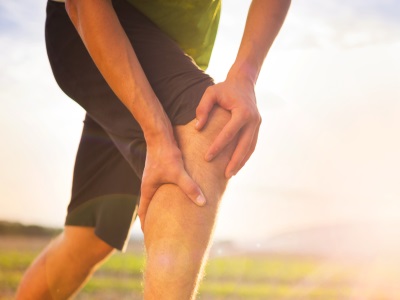 By Gustave L. Mellgren, M.D., Family Medicine with Obstetrics
By Gustave L. Mellgren, M.D., Family Medicine with Obstetrics
Sound familiar to you or someone you know? If so, you are not alone. Chronic knee pain affects 25% of adults. Arthritis is the most common cause of knee pain that limits people from activities they want to do or which keeps their body healthy. Staying active is important to stay healthy so when knee pain limits activity, it can be a big problem.
Using over-the-counter anti-inflammatory medications can help alleviate knee pain, but taking those medications regularly can cause health problems such as liver or kidney disease so their use should be monitored by a healthcare provider. The same thing can be said for many of the prescription medications used, including narcotics, which have other problems associated as well. In fact, studies have shown that narcotics are no better than basic anti-inflammatory medications when it comes to long-term pain.
Many patients with knee pain find themselves in a difficult catch-22 situation. To be healthy, people need to be active, but how can someone with severe knee pain be more active, especially if medication may not be a good option? Unfortunately, arthritis cannot be reversed without surgery. One conservative treatment option is to decrease the amount of inflammation with either medications or injecting steroids into the joint. Another traditional option for knee pain is to rehabilitate the muscles and ligaments supporting the knee through physical therapy. This improves stability and relieves tension on the joint which can reduce pain. Lubricant treatments like hyaluronic acid (the rooster comb cartilage injection) can be effective for some individuals as well.
Until recently, the only other treatment option was a knee replacement. While knee replacement is not for everyone, it is the only treatment that removes arthritis and its associated pain-causing inflammation. Now there is a new option for non-surgical management of chronic knee pain – Coolief Cooled Radiofrequency nerve ablation. Water circulates through the COOLIEF device while the tissues are heated, enabling it to treat a larger area than similar types of radiofrequency systems. This allows the nerves that cause the pain to be targeted—without over-heating the surrounding areas—and provides welcome pain relief. As with other non-surgical pain management options, the arthritis is still there, but the pain is not. Many patients get up to two years of relief from this procedure. It is not always permanent because nerves can regenerate.
Since this technology is a newer approach to treating knee pain, many insurance companies require patients to try the more conservative approaches before they will cover the Coolief procedure. If you have chronic knee pain, talk to your healthcare provider about your options and ask if Coolief may be an alternative treatment.

